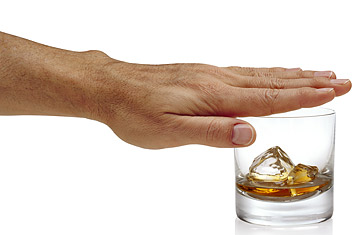
(2 of 2)
What's more, the abstinence-only model is far from foolproof: 90% of alcoholics do not get sober on their first attempt, and most rehab programs report a more than 50% relapse rate in their patients within months. First attempts to quit smoking cold turkey fail just as often. So, helping drinkers and smokers cut down, even if they can't quit immediately, may have significant value, says Teri Franklin, a professor of neuroscience at the University of Pennsylvania. "If you can prevent people from inhaling the 4,000 chemicals in just one cigarette, over 400 of which are carcinogenic, you can get a health benefit," she says, noting that she was only able to quit smoking by first cutting down.
Franklin is now studying the effect of baclofen on nicotine cravings. In one nine-week controlled trial involving 60 smokers, she found that those who worked up to a daily 80 mg dose of baclofen were able to reduce their smoking from 20.5 cigarettes a day to eight, a significant improvement over the placebo group, which was able to cut down to 12. And there was a distinct point at which the effect appeared to turn on — just like the switch discussed by alcoholics.
That switch may apply to a variety of cravings, such as binge eating or even using heroin or cocaine, say researchers. Why? Because baclofen appears to intercept them at their roots: addiction is driven by the same brain system that motivates people to seek natural pleasures like food and sex. These rewarding experiences trigger the release of the neurotransmitter dopamine — the brain's "do it again" signal. Over time, addicts' brains become narrowly focused on drug-related pleasures and hypersensitive to cues associated with them, such as seeing an old drinking pal. Hanging out with that friend would prompt a rise in dopamine levels in the brain's reward system. Researchers think that's where baclofen cuts in: by binding to the GABA-B receptor in the brain, it modulates this system and prevents the release of dopamine in response to cues. That appears to short-circuit cravings.
Still, not all research has been conclusive. While it was baclofen's effect in a crack-addicted patient that first got Penn scientists interested (the patient, a paraplegic named Edward Coleman who was taking baclofen for muscle spasms, reported that it also cut his cravings for crack), a recently published multisite trial of the drug in cocaine addicts did not produce significant results. "We think one of the reasons is the dose," says Franklin, noting that most alcoholics who have reported the switch tend not to experience it at less than 80 mg per day; the cocaine trial used 60 mg.
At high doses, however, baclofen can cause drowsiness and muscle spasms, although preliminary studies including Franklin's suggest that these side effects can be prevented with gradual exposure. Patients must also be weaned off the medication slowly to avoid muscle problems and anxiety. And for the treatment of addiction, it appears that baclofen must be taken indefinitely, since cravings return once the drug is stopped.
Whether or not baclofen proves to be the next big quit drug — there are at least four other prescription drugs currently available to help people stop smoking or drinking, including naltrexone, buproprion, acomprosate and Chantix, which have shown varying degrees of benefit — most addiction researchers would continue to encourage abstinence. "There are always some patients who can [cut down] to drink small amounts, but they are the exception," says Dr. Nora Volkow, director of the National Institute on Drug Abuse, which is funding several ongoing trials of baclofen. Although Volkow thinks baclofen shows promise in helping patients quit drinking altogether, she says the idea of controlled drinking is unwise: "My advice to patients is, Don't risk it."
The original version of this article misspelled Dr. Olivier Ameisen's last name.
